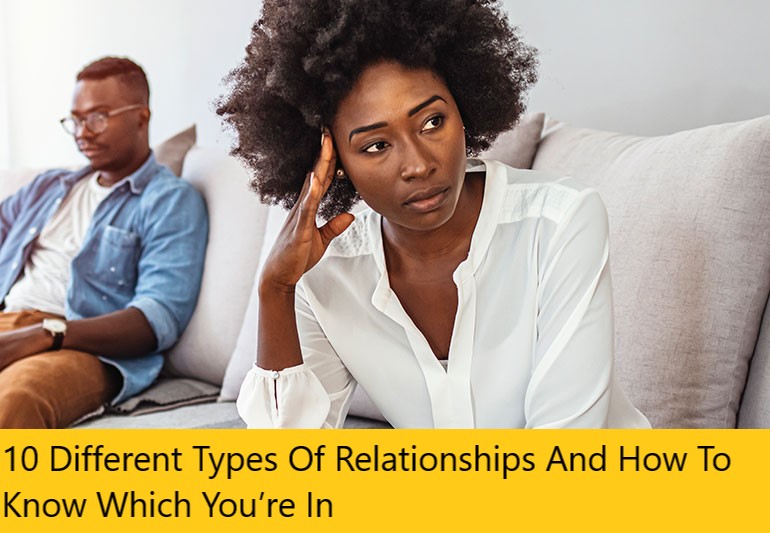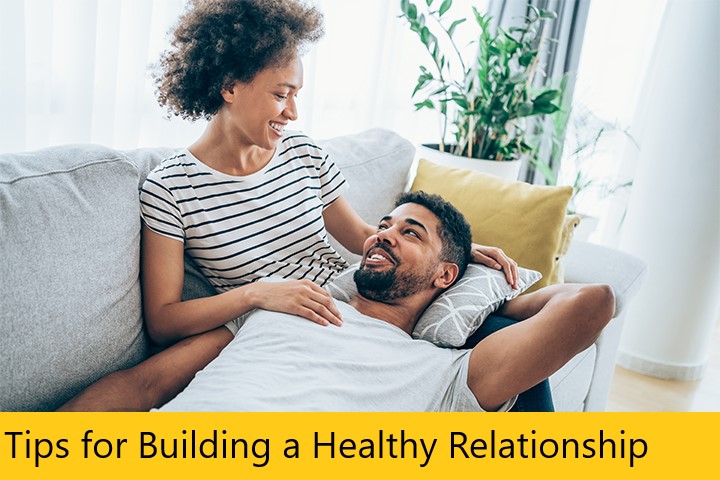10 Different Types Of Relationships And How To Know Which You’re In – There are many different types of relationships. No two relationships look the same, but sometimes, labels and categories can help us understand better.
Your connection with your partner is probably not the same as anyone else’s. However, it can be useful to understand the dynamics between you and why your boundaries are the way that they are.
Just as there are different types of couples, there are many different types of relationships between humans.
Basic Types of Relationships
There are four basic types of relationships:
Family relationships
Friendships
Acquaintanceships
Romantic relationships
Then there are also several sub-categories within those main four, including professional/work relationships, teacher/student relationships, community or group relationships, place- or location-based relationships (neighbors, roommates, and landlord/tenant relationships), enemies/rivals, and relationships with self.
The type of romantic relationship you are in depends on many things — the people in it, your experiences so far, your characteristics, etc.
This list of 11 different types of romantic relationships can help you understand more about which kind you’re in.
Independent Relationships
Being independent is not bad for you. However, being in a serious relationship requires compromise and sacrifice. Independence is not the quality that you are looking to show off.
Sure, you and your partner need to be independent up to a certain level that allows you both to function without each other, but total independence in the relationship is never a good sign.
Codependent Relationships
In a codependent relationship, you and your partner can’t seem to function without each other. As mentioned before, independence is a quality that everyone should possess.
Not being able to stay away from your partner can cause problems in the other areas of your life, like your social life and your relationships with your friends and family.
There are many forms codependent relationships can take, but the primary factor that distinguishes a healthy interdependent relationship, in which two people can rely upon each other without sacrificing themselves, from a toxic codependent relationship is the degree of balance between partners when it comes to needing and supporting or giving and taking.
It should be noted that there is a marked lack of agreement as to what constitutes a codependent relationship[1], so determining whether or not any given relationship is or is not truly codependent remains is highly subjective.
Dominant/Submissive Relationships
A relationship where you control your partner or they control you is only a good thing in the context of consensual BDSM style relationships.
Outside of the bedroom, this type of dynamic may indicate a lack of independence, understanding, and trust, but not necessarily.
Open Relationships
Open relationships, sometimes referred to a consensually non-monogamous relationships, are those in which one or both partners are “allowed” to be romantically and/or sexually involved with other people outside of the relationship.
There are many consenting adults in open relationships, and studies have found there can be significant benefits, including increased satisfaction in couples with issues related to sexual Incompatibilities[2].
The key is to have the consent of both partners and to remain transparent with one another about potential jealousies.
Read More : Salvabrani.com

Changing Relationships
Couples in changing relationships may adjust to each other by changing their routines, interests, style, hobbies, and even friends. In simple words, they change themselves for their partner.
No two people on Earth are the same, which means all relationships require compromise and acceptance. It should not be necessary to change your entire personality just for another person to stay with you.
Toxic Relationships
There is no one definition of what makes a relationship toxic, but generally, while not necessarily abusive, a relationship that makes you feel worse more than it makes you feel better[Scott, E. What Is a Toxic Relationship? Verywellmind. July 2, 2020 may be considered potential harmful to your well-being.
Determining whether or not you are in a toxic relationship is very much about how you feel about yourself within that relationship.
Do you feel controlled? Do you feel valued and heard? Are you being abused, either emotionally or physically?
Casual Relationships
A casual, “just for now” relationship consists of two people who are not looking for anything serious.
They may be looking for a fun temporary partner, possibly while healing from the end of a long-term relationship, or they may just be at a point in their lives where they don’t want to have to focus on the needs or wants of another person in a romantic context.
Best Friends Relationships
These are relationships in which both partners are comfortable talking and connecting, but there is a lack of intimacy.
Sex is an important part intimate relationships, and a relationship without it may suffer unless the lack is something that can be genuinely accepted and tolerated by both partners or an understanding is reached that one partner is free to find satisfaction in that area with others.
Sexual Relationships
Sexual relationships consists of two people who are looking for sexual satisfaction and nothing deeper.
While there is typically little or no place for deeper connection within these relationships, there are many people who start out in a sexual relationship, find themselves attached to one another, and are then able to create a meaningful bond.
Long Distance Relationships
Long distance relationships are those in which partners live a significant enough distance from one another that they cannot be together physically without expense, planning, or inconvenience.
While it was once considered common knowledge that most long distance relationships were doomed to fail due to the inherent lack of consistency and inability to communicate regularly, recent studies show a far rosier picture.
One 2014 study[3] found that couples in long-distance relationships “are not at a disadvantage,” and another from 2012[4] found that people in long-distance relationships report “higher levels of relationship quality on a number of relationship quality variables, as well as higher levels of dedication to their relationships and lower levels of feeling trapped.”
Healthy Relationships
While no relationship is picture-perfect at all times, healthy relationships are based on understanding, trust, and true love. These relationships consist of two people who support one another with mutual love and respect.
As opposed to toxic relationships, healthy relationships are those that are mutually beneficial and provide value added to each person’s life.
Scientific research has found that there are a vast number of benefits to reaped by people in healthy relationships, including an increased lifespan[5], lower levels of stress[6], greater pain tolerance[7], and improved immunity[8].
Before entering a relationship of any type, it’s important that you first get to know yourself and your potential partner.
Being in a relationship isn’t always easy, and not everyone is as ready as they seem to be or think they are.

